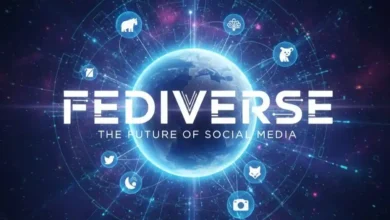The 10GW Colossus: OpenAI and NVIDIA Partnership and the Race to AGI

The whispers have become a roar. The recent, earth-shattering announcement of a strategic partnership between AI powerhouse OpenAI and NVIDIA, the graphics processing titan to deploy an unprecedented 10 Gigawatts (GW) of NVIDIA systems, has sent shockwaves through the technology world. This isn’t just a collaboration; it’s a declaration of intent, a monument to the relentless pursuit of artificial general intelligence (AGI). But what does a data center demanding the power equivalent of several nuclear plants truly mean for AI development, and will this gargantuan undertaking accelerate our journey to AGI?
A Convergence of Titans: Why OpenAI and NVIDIA Partnership Matters
OpenAI, at the forefront of large language models and generative AI, is notorious for its insatiable demand for computational power. Training models like GPT-4 required astronomical resources, and the next generation of AI will only intensify this hunger. NVIDIA, on the other hand, is the undisputed king of AI hardware, with its GPUs (Graphics Processing Units) forming the backbone of virtually every significant AI breakthrough.
This partnership is a symbiotic dream. OpenAI gains guaranteed access to NVIDIA’s bleeding-edge hardware, likely including future generations of their Hopper and Blackwell architectures, at an unparalleled scale. NVIDIA, in turn, secures a massive, long-term customer and a proving ground for its most advanced technologies.
Key Implications of the 10GW Deployment:
- Unprecedented Scale: 10GW is not just a big number; it’s a paradigm shift. To put it in perspective, a single advanced data center typically consumes tens of megawatts. This partnership implies a network of hyper-scale data centers, potentially distributed globally, or a single, monolithic AI factory.
- Dedicated AI Infrastructure: This isn’t just shared cloud resources. This level of investment suggests a dedicated infrastructure, optimized from the ground up for OpenAI’s specific AI training and inference needs. This bespoke environment will likely offer unparalleled efficiency and performance.
- Cutting-Edge Hardware Access: OpenAI will undoubtedly be among the first to deploy NVIDIA’s newest and most powerful AI accelerators, potentially giving them a significant lead in pushing the boundaries of what’s computationally possible.
What This Means for AI Development: A Tsunami of Innovation
The immediate impact on AI development will be profound and multifaceted.
1. The Era of Even Larger Models:
The sheer computational horsepower unlocked by this partnership will allow OpenAI to train models orders of magnitude larger than anything seen before. We’re talking about models with trillions, or even tens of trillions, of parameters. This increased scale is often directly correlated with improved performance, generalization abilities, and the emergence of novel capabilities.
2. Advanced Research and Experimentation:
With abundant compute, researchers can conduct more extensive and complex experiments. This means:
- Faster Iteration Cycles: New architectures, training techniques, and regularization methods can be tested and validated at a blistering pace.
- Exploration of Novel Paradigms: Researchers can delve into computationally intensive areas previously deemed infeasible, such as more complex reinforcement learning environments, multi-modal integration on a grand scale, or truly foundationally different AI approaches.
- Reduced Training Time for Existing Models: While the focus will be on larger models, even current-generation models could be trained faster, freeing up compute for further research.
3. New Capabilities and Applications:
The combination of larger models and more sophisticated training will undoubtedly unlock new capabilities. Imagine AI that can:
- Exhibit Deeper Understanding and Reasoning: Moving beyond pattern matching to more robust, logical inference.
- Generate Hyper-Realistic and Coherent Multi-Modal Content: Seamlessly blending text, images, video, and even 3D models.
- Accelerate Scientific Discovery: Simulating complex biological processes, discovering new materials, or aiding in drug development with unprecedented precision.
- Personalized and Adaptive AI Experiences: AI that truly understands individual users and adapts to their evolving needs and preferences.
The AGI Question: Will 10GW Accelerate Its Arrival?
This is the billion-dollar, or rather, the multi-trillion-dollar question. AGI, or Artificial General Intelligence, refers to a hypothetical AI that can understand, learn, and apply intelligence to any intellectual task that a human being can. It’s the holy grail of AI research.
The belief within OpenAI and many other leading AI organizations is that scale is a critical, if not the critical, ingredient for achieving AGI. The hypothesis is that as models grow in complexity and are exposed to vast amounts of diverse data, they will eventually “emerge” with general intelligence capabilities.
Arguments for Acceleration towards AGI:
- Increased Emergent Properties: History has shown that simply scaling up neural networks can lead to unexpected and powerful emergent capabilities. With 10GW, the potential for such emergent properties increases exponentially.
- Bridging Data Gaps: Larger models can process and synthesize far more information, potentially allowing them to build a more holistic and robust understanding of the world, a prerequisite for general intelligence.
- Enabling Foundation Models of Foundations: This compute could facilitate the creation of truly universal foundation models that can be fine-tuned for an incredible array of tasks, demonstrating a form of generalized understanding.
Arguments for Caution (Why 10GW alone might not be enough):
- The Architectural Chasm: Some researchers argue that current neural network architectures, even at extreme scale, lack fundamental elements necessary for true AGI, such as causal reasoning, true common sense, or self-improvement without human intervention.
- The “More of the Same” Trap: While scale has yielded impressive results, there’s a possibility of diminishing returns if underlying architectural breakthroughs are also required. Simply adding more compute to existing paradigms might lead to very powerful, but ultimately specialized, intelligence.
- The Alignment Problem: Even if AGI is accelerated, the challenge of ensuring it is aligned with human values and goals becomes even more pressing. The faster we get there, the less time we have to solve this existential problem.
The Road Ahead: A Glimpse into the Future
The OpenAI and NVIDIA partnership is more than just a business deal; it’s a monumental bet on the future of AI. It signifies a profound commitment to pushing the boundaries of what’s possible and accelerating the timeline for transformative AI.
While the exact path to AGI remains elusive and hotly debated, one thing is certain: the deployment of 10GW of NVIDIA systems will unleash an unprecedented wave of AI innovation. We are entering an era where computational constraints are being dramatically relaxed, allowing researchers to dream bigger and build more powerful AI than ever before.
Whether this colossal undertaking directly leads to AGI or simply paves the way for a more sophisticated form of narrow AI, its impact will be felt across every industry and aspect of human endeavor. The race to the intelligent future just got a massive jolt, and the world is watching with bated breath.
OpenAI official announcement Blog. Click here.
For more Odinozz Tech articles, click here.
Follow Odinozz on social media. Click here.



